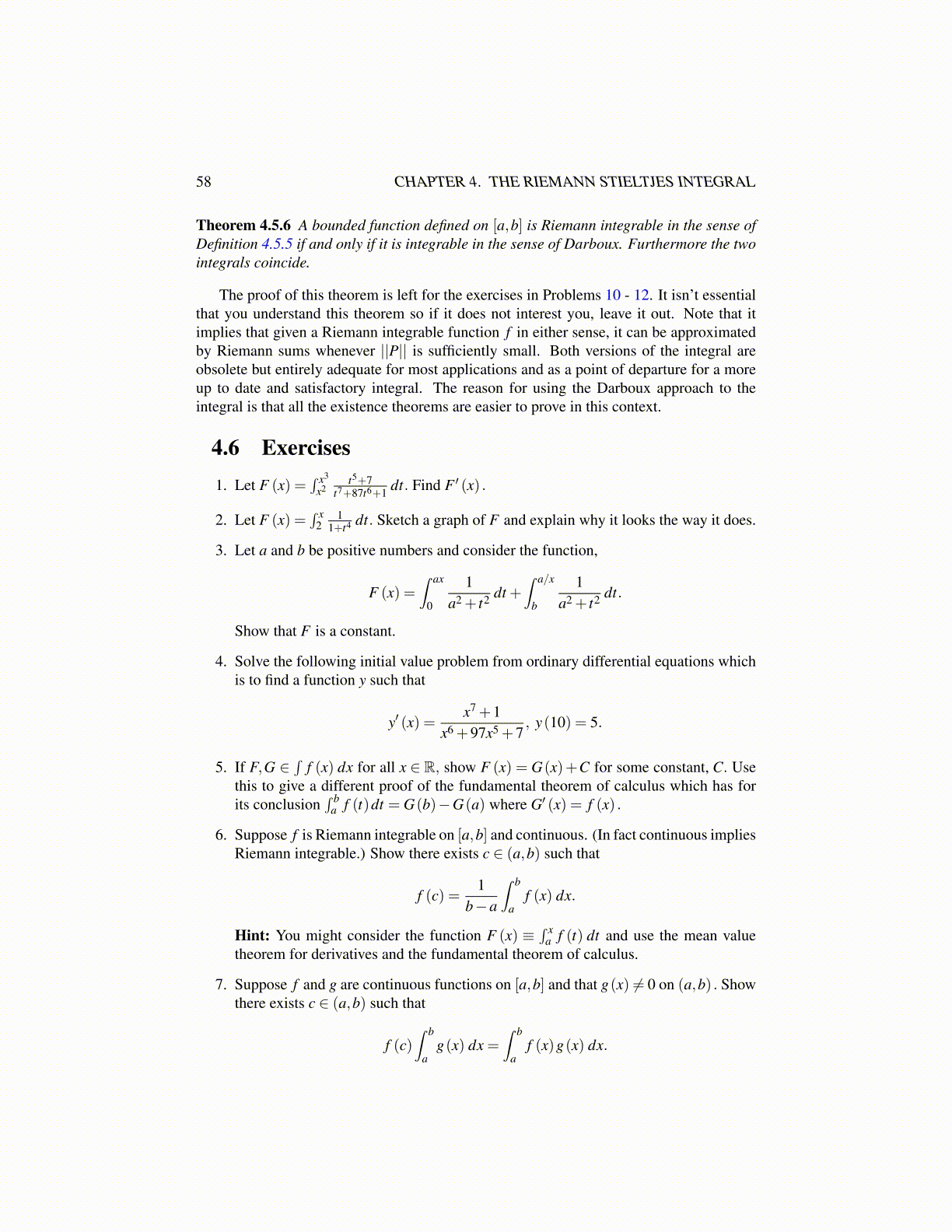
58 CHAPTER 4. THE RIEMANN STIELTJES INTEGRAL
Theorem 4.5.6 A bounded function defined on [a,b] is Riemann integrable in the sense ofDefinition 4.5.5 if and only if it is integrable in the sense of Darboux. Furthermore the twointegrals coincide.
The proof of this theorem is left for the exercises in Problems 10 - 12. It isn’t essentialthat you understand this theorem so if it does not interest you, leave it out. Note that itimplies that given a Riemann integrable function f in either sense, it can be approximatedby Riemann sums whenever ||P|| is sufficiently small. Both versions of the integral areobsolete but entirely adequate for most applications and as a point of departure for a moreup to date and satisfactory integral. The reason for using the Darboux approach to theintegral is that all the existence theorems are easier to prove in this context.
4.6 Exercises1. Let F (x) =
∫ x3
x2t5+7
t7+87t6+1 dt. Find F ′ (x) .
2. Let F (x) =∫ x
21
1+t4 dt. Sketch a graph of F and explain why it looks the way it does.
3. Let a and b be positive numbers and consider the function,
F (x) =∫ ax
0
1a2 + t2 dt +
∫ a/x
b
1a2 + t2 dt.
Show that F is a constant.
4. Solve the following initial value problem from ordinary differential equations whichis to find a function y such that
y′ (x) =x7 +1
x6 +97x5 +7, y(10) = 5.
5. If F,G ∈∫
f (x) dx for all x ∈ R, show F (x) = G(x)+C for some constant, C. Usethis to give a different proof of the fundamental theorem of calculus which has forits conclusion
∫ ba f (t)dt = G(b)−G(a) where G′ (x) = f (x) .
6. Suppose f is Riemann integrable on [a,b] and continuous. (In fact continuous impliesRiemann integrable.) Show there exists c ∈ (a,b) such that
f (c) =1
b−a
∫ b
af (x) dx.
Hint: You might consider the function F (x) ≡∫ x
a f (t) dt and use the mean valuetheorem for derivatives and the fundamental theorem of calculus.
7. Suppose f and g are continuous functions on [a,b] and that g(x) ̸= 0 on (a,b) . Showthere exists c ∈ (a,b) such that
f (c)∫ b
ag(x) dx =
∫ b
af (x)g(x) dx.